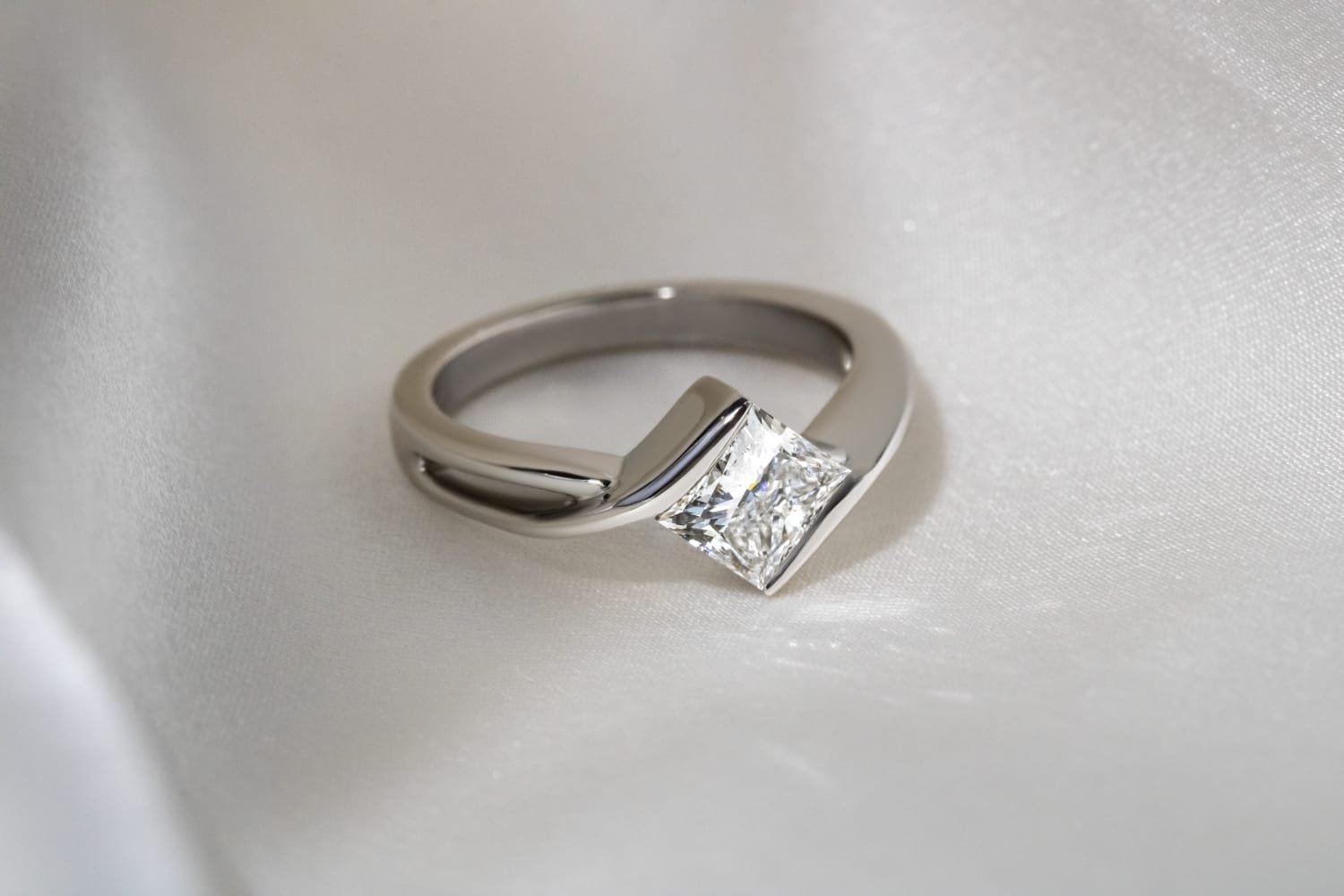In the more recent past, synthetic diamonds or cultured diamonds have become exceedingly popular as they are not only beautiful but they are also business and conflict-free. Of them, 1-carat lab diamond best suits every buyer due to its size, brilliance and reasonable price.
In this ultimate guide, you will gain all the important information you require regarding 1-Carat Lab-Grown Diamonds including about how they are made, the advantages of wearing lab-grown diamonds and how to buy one.
What Are Lab Diamonds?
Man-made diamonds are commonly known as laboratory grown diamonds, synthetic diamonds, or cultured diamonds and they are grown in a controlled manner within a Chemical Vapour Deposition (CVD) chamber or other similar sophisticated technological processes.
These diamonds meet all the necessary requirements intrinsic to natural diamonds in terms of physical, chemical, and optical characteristics. There are two main processes that are used in the formation of lab diamonds, these include CVD and HPHT.
The Beauty of 1 Carat Lab Diamonds
1. Size and Versatility
Carat represents the weight of a diamond and a 1 carat stone is most preferred today in engagement rings, earrings, necklaces among others. Its superior size and presence is actualized in such a way to be neither gaudy nor underwhelming. Due to its flexibility of use, the sting is a favourite among jewellery lovers.
2. Cost-Effectiveness
Another good and easy one to deal with is cost and with lab diamonds 1 carat costing less than a natural diamond of the same carat weight, it is great to go for it. In many cases, lab grown diamonds are about 30%-40% cheaper than ones that come from the mine. This makes it possible for the buyers to spend the saved money and purchase better quality settings or purchase other jewellery items without having to reduce the size or functionality of the diamond.
3. Ethical and Environmental Benefits
Lab diamonds are ethical as they do not involve any harm to the environment and do not have the same sort of immoral sides as the traditional diamond mining. When choosing a lab diamond, consumers are rest assured that their consumable did not lead to harm of the environment or non-adherence to humane working conditions.
How should one comparatively assess two 1 carat lab diamonds?
Knowing the four Cs is critical while looking for a 1 carat lab diamond: Diamond grading mostly considers four criteria: carat, cut, colour, and clarity. Insofar as they relate to product quality, they determine the general merit of the diamond.
1. Carat
It is the weight of the diamond; carat is used in connection to its size. One might be interested to know the fact that 1 carat of diamond is as light as 200 milligrammes. For many customers, cut, colour and clarity are results that define the general image of the diamond, although carat weight reigns supreme.
2. Cut
Another important factor that experts consider crucial more than anything is the cut of a diamond, as it influences the stone’s luminosity. A diamond lies in its ability to or reflect light and thus appears much nicer if cut well. The most preferred settings are round, princess and cushion shapes when it comes to 1-carat diamonds.
3. Colour
Diamond colour ranges from D – which is a completely transparent diamond – to Z and is defined as light yellow or light brown. Natural non-coloured diamonds are scarce and hence they are worth more on the market. When it comes to lab diamonds, although there can be colours ranging from D to Z, well crafted lab diamonds are usually D-F (colourless) or at least G-J (nearly colourless).
4. Clarity
Clearness it is; inclusions and blemishes are internal or external flaws within the diamond. Clarity is classified by Flawless (The gemstone has no internal or external flaws which are discernible for a 10x power loupe), included (The flaws are easily visible to the naked eye). Here, the main difference between lab and natural diamonds is that Lab grown diamonds generally contain fewer imperfections compared to their mined counterparts since they are artificially grown in a controlled manner.
Before buying, a few things to consider:
1. Certification
Ask for documentation from an independent gemological laboratory to verify that your lab diamond is genuine and has the quality claimed by the seller. It is important to note that when a diamond is certified it is confirmed to have been through a certain standard and is real.
2. Compare Prices
In this regard, prices of lab diamonds are comparatively lower than mined diamonds, although they are customizable to a degree depending on the 4 Cs. This helps people to get the best price in the market to enable them to bargain between different organisations without having to settle for inferior quality products.
3. Examine Return Policies
Select an additional seller that has a hope of making the return policy. This makes it easier for you to assess the diamond and gauge whether it’s okay to proceed to the next level without being hurried into making your final decision.
Lab diamonds: The Possibility of Things that Might Have Been
Lab diamonds today are widely used and accepted, enjoying enhanced technology and an elevated awareness of the significance of the social and environmental responsibility of consumers. Moreover, it should be recognized that increasing the effectiveness of production is equally enhancing the quality and increasing the variety of lab diamonds, which will expand the available choices for customers interested in the acquisition of unique diamonds.
Conclusion
A 1-carat lab diamond is stunning, valuable, and allows one to do what is right for the planet . For either an engagement ring or any other piece of jewel, lab diamonds come with the same brilliance as the mined ones, but at a considerably lower price.
This way, you will be aware of what to look out for and what to avoid when trying to find an acceptable lab diamond in the market for purchase. The time for reinvention has come: enhance your style with a 1-carat lab diamond – classic beauty united with the future.





